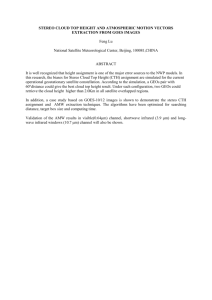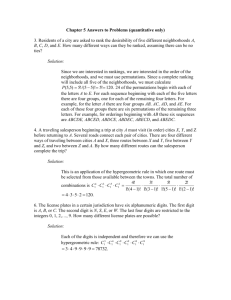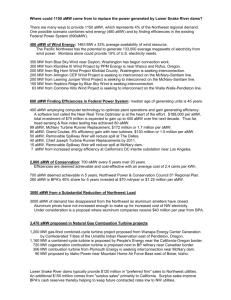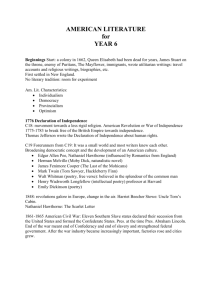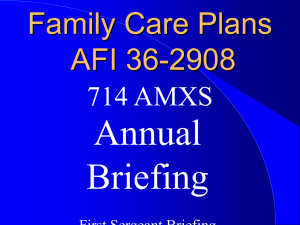Document
advertisement
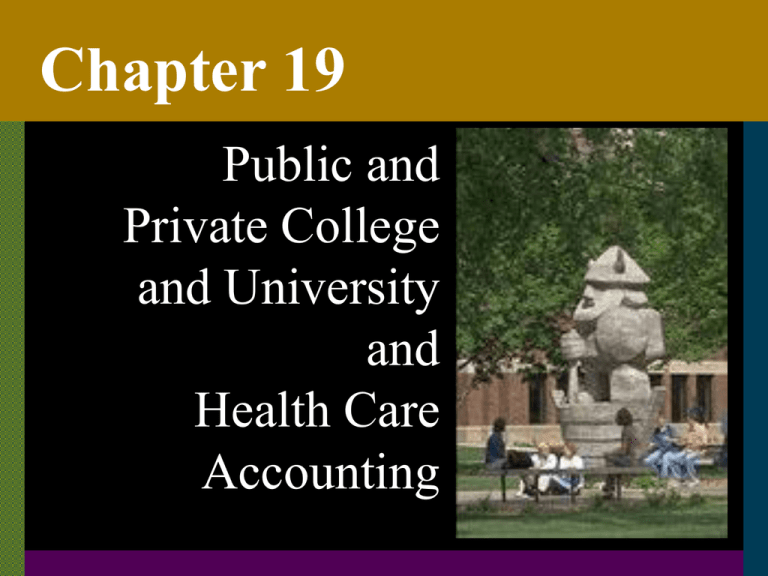
Chapter 19 Public and Private College and University and Health Care Accounting College and university standardsetting Public universities follow GASB guidance Private universities follow FASB guidance Accounting and financial reporting standards are now very different for public and private universities C19 2 College and university accounting Public institutions GASB No. 35 New financial reporting model for public colleges and universities Provides for both fund statements and entity-wide statements – Statement of Net Assets – Statement of Changes in Net Assets – Statement of Cash Flows Many universities will report as special purpose governments engaged in business-type activities C19 4 Fund accounting Universities have traditionally used fund accounting Funds are similar to state and local government funds C19 5 College and university funds Current funds (unrestricted & restricted) Loan funds Endowment and similar funds Annuity and life income funds Agency funds Plant funds (four) C19 6 Current funds: unrestricted Revenues (tuition, grants, appropriations, etc.) Expenditures (education, research, student aid, operations, etc.) Transfers (mandatory & discretionary) Report assets, liabilities, fund balances C19 7 Current fund: restricted Revenues arise from governmental grants and contracts, private gifts, and endowment income Expenditures are generally for instruction, research and student aid Resources are expenditure driven C19 8 Loan funds Accounts for resources available for loans Resources consist mainly of gifts and unrestricted current fund transfers Additions to fund are recorded directly to the restricted or unrestricted fund balance Expenditures and losses deducted directly from the fund balance C19 9 Endowment and similar funds Regular or pure endowments Term endowments Quasi-endowments Investments at fair value - “mark to market” C19 10 Regular and pure endowments Principal specified by donor as nonexpendable Earnings on resources invested are available for expenditure C19 11 Term endowments Principal is expendable after a specified time period or designated event Resources are added to a unrestricted current fund, unless donor has specified another application C19 12 Quasi-endowments Funds set aside by a board or controlling body Funds usually come from unrestricted current funds, or restricted current funds if donor’s limitations are not violated Discretionary funds C19 13 Annuity funds Periodic payments are made to the donor or other designated beneficiary for a specific period of time Accounted for at their market value Liability recorded for actuarially computed present value of total payments – excess credited to Annuity Fund Balance C19 14 Life income fund All income received on contributed assets is paid to donor or other specified recipient for life Assets recorded at market value and a credit to Life Income Fund Balance is made Liability established immediately as income is received C19 15 Ending annuity and life payments Principal is transferred to the donor-specified fund group, or to the unrestricted current fund revenue account Gains or losses on sale of investments treated as changes in principal – record in appropriate fund balance account C19 16 Plant funds Unexpended Plant Funds – resources are used to acquire properties Plant Fund Renewals and Replacements – resources used to keep plant in operating condition C19 17 Plant funds (con’t) Plant fund for renewals and replacements – corresponds to debt service fund of a governmental unit Investment in Plant – similar to GFAAG and GLTDAG – controls all plant assets and liabilities except those found in the endowment fund C19 18 Agency funds Agent of others – collection, custodianship, disbursement No fund balance C19 19 College and university accounting Private institutions Private college & universities Applicable FASB Statements – No. 93: Depreciation – No. 116: Contributions – No. 117: Financial Statements – No. 124: Investments C19 21 FASB No. 116 Separates transactions into exchange, nonexchange, and agency – exchange: both parties benefit – contributions: only one party benefits – agency: acting as intermediary C19 22 Contributions are defined as nonexchange: Recognize contributions received and unconditional promises to give as revenues or gains in the period received. Exceptions are made for contributions of services and works of art C19 23 Donor restrictions Only the donor can restrict the use of assets All contributions are classified in the period received as: – unrestricted revenue – temporarily restricted revenue – permanently restricted revenue C19 24 Release from donor restrictions Reclassifications are used to release restrictions: – operating purpose – purchase of a fixed asset – passage of time C19 25 Types of contributions Cash contributions Promises to give Reductions of liabilities Free use of space/assets Fixed assets (buildings and/or land) Each may have donor-imposed conditions and/or restrictions. C19 26 Volunteer services Recorded at fair market value only if they create or enhance non-financial assets or Require specialized skills that would have been purchased C19 27 Works of art and treasures Optional if going into a collection that will be held for research or public exhibition and, if sold, the proceeds will be used to acquire other collectibles C19 28 Donor-imposed conditions When condition is met recognize revenue: – conditional donations of cash or property are credits to “refundable advances” – conditional pledges are not recorded until condition is met (footnote disclosure only) C19 29 Marketable securities Report at fair market value Applies to all investments C19 30 Depreciation All private not-for-profit organizations record depreciation, except for works of art C19 31 Government grants Considered to be exchange transactions, not contributions In private universities they are recorded as “refundable deposits” (a liability) until work/service is performed, then they become revenue Under FASB 116 definitions, grants are not restricted revenue C19 32 FASB No. 117 Minimum display requirements for three required statements Flexible formats Report entity-wide totals for each of the three categories of net assets – unrestricted – temporarily restricted – permanently restricted C19 33 FASB No. 117 (con’t) Statement of Financial Position – assets, liabilities, net assets Statement of Activities – change in unrestricted, temporarily restricted, and permanently restricted Statement of Cash Flows – operating, financing, investing C19 34 Health care accounting Public and Private Health care entities Hospitals, nursing homes, HMOs, etc. AICPA Audit Guide covers both government and private health care organizations GASB Statement 34 allows reporting as special purpose government using proprietary fund accounting Public and private health care organization reporting is similar Net asset reporting is slightly different C19 36 Health care fund structure General funds account for resources available for general operations Donor-restricted funds – specific purpose funds – plant replacement and expansion funds – endowment funds – annuities or life income funds, or loan funds C19 37 Types of revenues Operating Revenue relates to principal activity of providing health care services – patient service revenue – resident service revenue – other operating revenue Nonoperating Revenue – unrestricted and donor-restricted pledges, gifts, grants, investment income C19 38 Types of expenses Nursing services Other professional service General services expense Fiscal services expense Administrative services expense Interest expense C19 39 Accounting for contributions If contribution is unconditional and unrestricted – other operating revenue - unrestricted (on-going and central activities) or – nonoperating revenue - unrestricted (peripheral or incidental transactions) C19 40 Accounting for contributions (con’t) If contribution is unconditional and restricted – other operating revenue - temporarily restricted or – other operating revenue - permanently restricted C19 41 Volunteers and donated items Volunteers – same rules as other not-for-profits – create or enhance nonfinancial assets or – require specialized skills and would typically need to be purchased Donated Items: depending on nature of gift – other operating revenues - unrestricted – nonoperating revenues C19 42 Malpractice claims Insurance premiums are often allocated to administrative services expense If self-insured – establish a trust account – establish an expense and liability for estimated claims and judgments C19 43 Financial statements - public Government-wide reporting – Statement of Net Assets – Statement of Revenues, Expenses, and Changes in Net Assets – Statement of Cash Flows Net assets – Invested in Capital Assets, net of related debt – Restricted – Unrestricted C19 44 Financial statements - private Follow FASB No. 117 - entity-wide reporting – Statement of Financial Position – Statement of Activities – Statement of Cash Flows Net Assets – Permanently Restricted – Temporarily Restricted – Unrestricted C19 45
